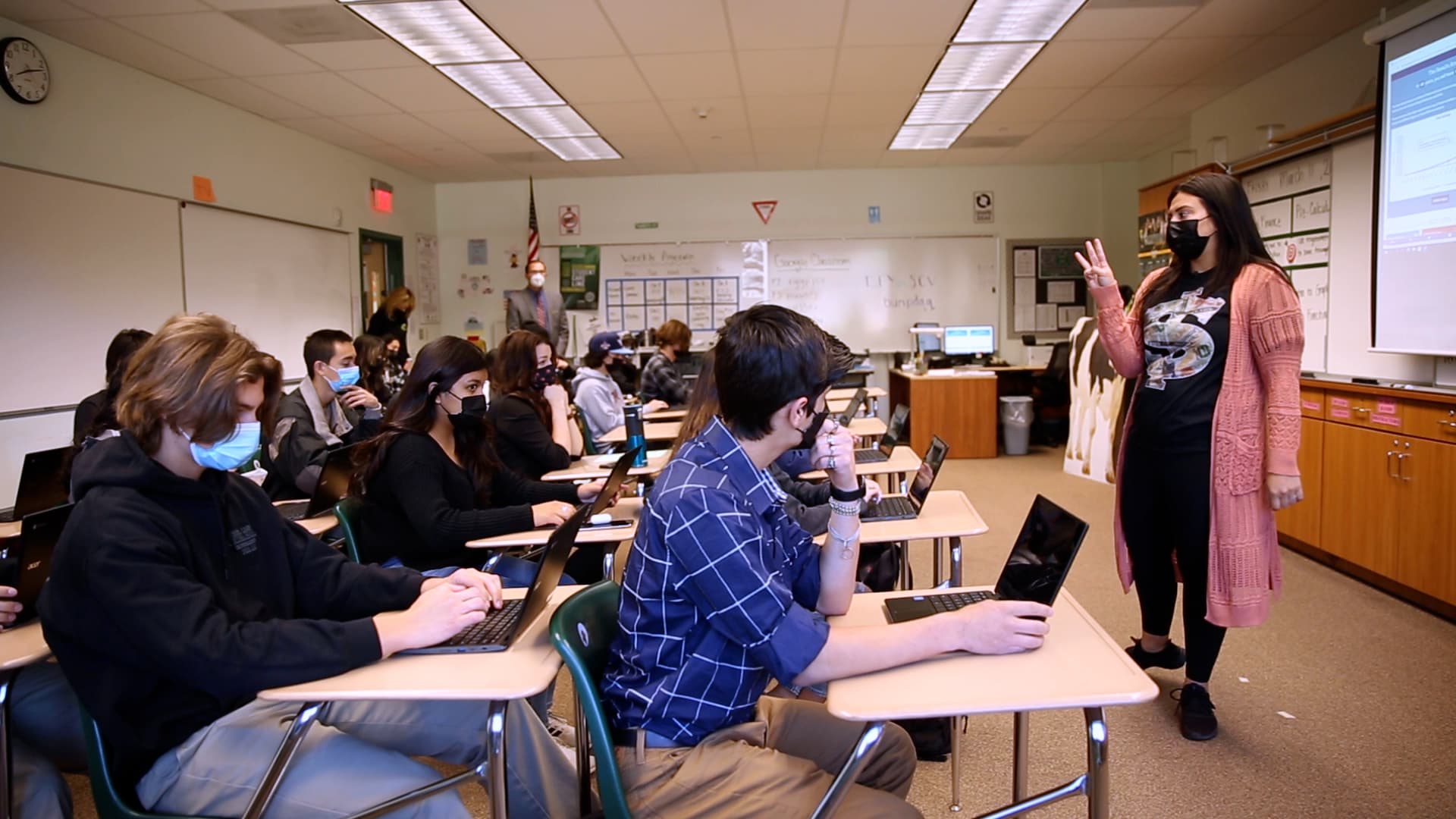Millions of high school students across the U.S. will graduate in 2022 with one important course under their belt: personal finance.
Recent momentum among states requiring personal finance education in high school means that nearly 1 in 4 students will take such a course before they graduate this year, according to Next Gen Personal Finance’s 2022 State of Financial Education report, released Thursday.
That’s a huge change from 2018, when the first report was issued and only 16.4% of high school students in the country were guaranteed a personal finance class. It also means that Next Gen Personal Finance, a nonprofit, is on track to reach 100% of students with guaranteed access to personal finance education by 2030, a goal of the organization.
More from Invest in You:
How to decide if you should rent or own a home
U.S. households are spending an extra $327 a month due to inflation
Is inflation crunching your budget? Here are 3 ways to fight back
“We’ve really seen some great progress in terms of guaranteed access,” said Christian Sherrill, director of growth and advocacy at Next Gen Personal Finance.
Bills in progress
In addition to the eight states that currently guarantee all students will take a personal finance course before graduating high school — which Next Gen Personal Finance considers to be the gold standard — four additional states have passed similar legislation this year.
Those states — Florida, Nebraska, Ohio and Rhode Island — are in the process of implementing their mandates, meaning that in the coming years, more than 32% of students in the U.S. will have a personal finance class.
“In the span of five, six years, the proportion of students nationwide with guaranteed access to a personal finance class has doubled,” said Sherrill. “We’re thrilled to see that surge in growth.”
Other states also have pending bills that may be passed later in the year, further extending personal finance education efforts across the country. A measure in Georgia is likely to be the next one to become law — both houses of the Georgia General Assembly have approved the legislation and sent it to Gov. Brian Kemp, a Republican, to sign.
“When you start seeing Ohio and Florida as states that’ve already crossed the finish line, it’s shown other large states that this is possible,” said Tim Ranzetta, cofounder of Next Gen Personal Finance.
Access in states without mandates
To be sure, there are high schools in states without mandated personal finance education that offer such classes.
But local offerings are often unequal, the report found. Overall, 1 in 10 students in a state that doesn’t mandate a personal finance class have access to such a course. In schools where 75% of students are Black or Brown or receive free and reduced lunch, that share drops to 1 in 20.
“A lot of schools that don’t feel like they have the resources to implement this course end up not doing it,” said Yanely Espinal, director of educational outreach at Next Gen Personal Finance.
She added that many of the schools that serve mostly minority students or are in a low-income community are some of the first to see issues with staffing and so may simply not have enough teachers to offer another course.
“If it’s not already a requirement, then that means it’s just so much less likely that they’ll have the resources, in terms in human capital, that can then serve every student,” Espinal said.
This is one of the reasons Next Gen Personal Finance is focused on working to have legislation guaranteeing personal finance education passed in every state.
Going forward
The group is also working on illuminating the importance of their standard – that students receive at least one semester-long, standalone course in personal finance before they graduate high school.
Currently, nearly half of all U.S. high school students have access to such a course as an elective, but it is not a graduation requirement. Another 25% receive some personal finance instruction embedded in another course.
To cover everything a high schooler should know before graduation, a full semester course is needed, according to Next Gen Personal Finance.
The nonprofit is also advocating for teacher training and connecting states and their teachers with free or low-cost resources for professional development.
“It empowers teachers to become credentialed or know that there’s a clear pathway for them to be able to teach this course,” said Espinal.
Overall, the progress of personal finance education bills has been exciting for the team. Momentum has picked up in the last few years and is poised to continue.
“There’s a real growing awareness among states that this is an essential course, probably driven by the pandemic,” said Ranzetta.
SIGN UP: Money 101 is an 8-week learning course to financial freedom, delivered weekly to your inbox. For the Spanish version Dinero 101, click here.
CHECK OUT: 74-year-old retiree is now a model: ‘You don’t have to fade into the background’ with Acorns+CNBC
Disclosure: NBCUniversal and Comcast Ventures are investors in Acorns.
